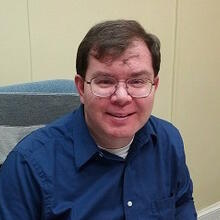We know for certain when the summer months are truly over: the warm sunny days recede into the distance of memory and evolve into the long dark winter evenings of the present; the humid breezes turn into an autumn chill; the green grass fades while the many-colored leaves start their migration from the trees, waiting to be raked and collected like so many scattered thoughts. We begin to understand (as if we’ve ever really forgotten) how the years pass and that time really does fly, making us stand back and wonder at it all.
When the calendar page turns from October to November, we experience a triduum of a sort—not the Easter-time variety, of course—but a triduum nevertheless. The holidays—and holy days—are so ingrained in the fabric of our lives, we oftentimes give them nary a thought. But when it comes to October’s end and November’s beginning, when we exchange the festivities of costumes, candy and make-believe of ghosts and goblins for the nudging reminder that are lives are fleeting, that we are really mortal after all, and we all know that there are people who have gone before us (and some of them we have known personally) and that there will be people after us—well, it is when frivolity gives way to reflection, and we need to figuratively hit the “pause button” and contemplate those things which are really lasting and more meaningful. Such are our “ordinary times,” as the church calendar may put it.
All Saints’ Day and All Souls’ Day obviously doesn't get the newsprint or a magazine cover a day like Halloween does, and understandably so—but they are very important days nevertheless. Thinking about saints and souls on those days are not for the fainthearted—especially in these days, when a mere glance at the news headlines or watching that solid bar that materializes across the television screen and declares “breaking news” (which is sadly becoming ever more commonplace), we are bombarded with reports that the world we live in is far from well, that the times seem to bear out that allegedly old Chinese maxim, “May you live in interesting times”—a “curse” if there ever was one. Oftentimes, our times are not merely “interesting,” but also frightening and bewildering. Time is just another element that we, in our harried lives, are trying to grapple with and can never completely understand.
And yet, saints and souls—and the days they represent—are reasons for hope. How often have we heard these expressions, “Oh, he’s (she’s) a good soul!” or, “That person has the patience of a saint!” Oftentimes, the two are intertwined in our parlance and our imaginations: because, when you really think about it, you cannot be one without the other. You can’t be a saint without a soul and every soul has the potential to be a saint. Maybe that is why All Saints’ Day and All Souls’ Day are next to each other on the church’s liturgical calendar.
Every now and then, the media perks up when news breaks when the Catholic Church announces the canonizations of new saints: they scramble to cover the panoply and the pageantry when new saints, venerables or blesseds are shown in those tapestries that are unfurled over the central balcony of St. Peter’s Basilica during the Mass in which they are proclaimed to the world. For all the “experts” in the secular media, it is a “spectacle”; it is another way to fill newsprint or video on an otherwise unimportant news day or slow news “cycle.” It is something that adds “color” and not much else. We’ve seen that recently in the elevations of the popes of recent history and memory: John XXIII, Paul VI, and John Paul II. But if that’s all it is—color and pageantry—then people are missing the point of it.
The trouble in understanding it is simple: people forget that those who are declared saints first started out as “souls,” just plain people whom fate—and God—brought them to that moment. For those of us who are ordinary (and there are an awful lot of us!) and who will never become or considered “famous,” we tend to think that sainthood is some elevated plane which is beyond our reach—as well as our comprehension. The great majority of us will never be anything of importance in this world; we will never be the great medical researcher, statesman (or stateswoman), philanthropist, movie star, or “whatever” it is that lands us in the pages of history or the affections of many. And seemingly, sainthood can be added to the mix: it is for people more gifted, more renowned, more holy—just plain more—than we are. No, it cannot possibly be for us, with our “busted halos” and less than perfect lives, for those of us whose lives are so mundane that our “notable” achievements are doing things that nobody gives a thought to: sweeping the stoop, driving the bus, train or taxi, tilling a field, assisting the sick or the down-and-out, helping friends or family, or even just editing and proofreading a few paragraphs for an article in a weekly magazine. Ordinary things done in (not so) ordinary times. Fortunately, we can take heart from those who have been given the “laurels” of sainthood: for they too, were people who (like the saying has it), “turned their minuses into pluses.”
Concerning these two days, All Saints’ Day and All Souls’ Day—maybe we should just throw water upon them? Not just “cold water,” but holy water! When you think about it, wouldn’t that be appropriate? We bless ourselves in church upon entering and upon leaving, as a reminder of our baptism. That seems an appropriate thing to do, especially on these two days, when we gather to reflect and pray for all souls, the living and the dead. It would be a poignant act for the entire month of November: holy water could serve as a reminder for us to not only pray for the intercession of the saints to help us get where they are, but also for our love ones who have “gone before us in the hope of rising again.” We mortals need all the help we can get—and who better than from all the saints and souls? It would truly be a communion of saints for those of us on earth.
Back in August, relatives from my mother’s hometown in Ireland (outside Ballina, County Mayo) came and visited us. It was a delightful visit; but before they left, they gave my mother a present which meant very much to her: a holy water font made in Ireland, with her hometown, Ballina, inscribed on the bottom. Green, white and gold, this porcelain reminder of faith and family stands guard near our kitchen door. Every morning, before my sister and I leave for another day of work in the canyons of Manhattan, Mother dear stands before her font and behooves us to bless ourselves (as if we don’t!) before “hitting the road” as well as getting her blessing for the workday ahead. She says—while pointing to her beloved font—(echoing a phrase she saw in the church bulletin) “Make it a habit!” We proceed to do so as we go our separate ways, lest we escape the approbations that only an Irish mother can give.
As I think about it now, it is not a bad habit to do in this month of saints and souls. Every time when my fingers dip into that miniature holy well, I’ll do my best to remember the blessings of those who went before me and hope that their prayers will carry me along, even during those interminably long trips through the Lincoln Tunnels of my life.








